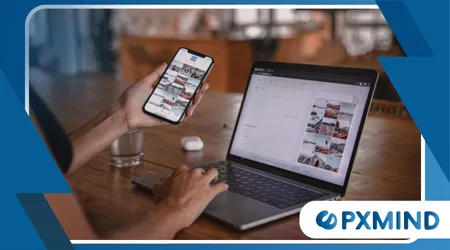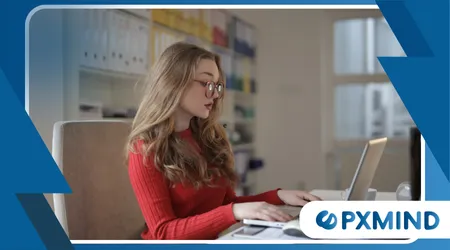Why Microlearning Works (and How to Use It)

Why Microlearning Works (and How to Use It). The human brain is a marvel of efficiency, and it processes information best when it’s not overloaded.
Anúncios
Our working memory has a limited capacity, and bombarding it with a dense, two-hour lecture can lead to cognitive overload and diminished retention.
Microlearning aligns perfectly with how our brains naturally function.
Breaking complex topics into smaller, focused modules allows for deeper processing and easier recall, effectively turning a mountain of information into a series of manageable hills.
This approach respects our mental limits and capitalizes on the brain’s natural ability to categorize and connect small pieces of data.
Moreover, the spaced repetition inherent in microlearning is a powerful tool.
By revisiting small chunks of information over time, we reinforce neural pathways, moving knowledge from short-term to long-term memory.
A 2023 study by the Brandon Hall Group found that microlearning content leads to a 17% increase in learning engagement and an 80% improvement in knowledge retention compared to traditional methods.
How Microlearning Beats Traditional Methods
Think of it this way: traditional learning is like a single, massive meal at a buffet.
You’re presented with everything at once, and while you might try to eat it all, you inevitably leave feeling full and unable to process everything you’ve consumed.
Microlearning, on the other hand, is like grazing throughout the day. Each small, focused snack provides the necessary nutrients without overwhelming your system, leaving you energized and ready for more.
Microlearning empowers learners by placing them in control.
They can learn at their own pace, on their own schedule, fitting a quick lesson into their commute, a coffee break, or even a few minutes before bed.
This flexibility removes the barriers of time and location that often hinder traditional learning.
Practical Applications in the Real World
So, you understand the theory, but what does microlearning look like in practice? It’s all around us.
Think of the 60-second tutorial videos on TikTok that teach a new recipe or a quick gardening tip.
Or the short, interactive quizzes on Duolingo that reinforce language skills. These aren’t just entertainment; they are powerful microlearning tools.
See how interesting: How Multitasking Affects Brain Performance
A software company, for example, might use a series of two-minute video tutorials to train employees on a new feature instead of a long, dry webinar.
Each video focuses on one specific function, making the information easy to find and review later.
This modular approach allows employees to learn exactly what they need, when they need it, boosting efficiency and on-the-job performance.
Another great example is a customer service team learning new policies.
Instead of a long training manual, they receive daily, interactive scenarios in a chatbot, each taking less than five minutes to complete.
This constant reinforcement keeps them sharp and well-prepared without disrupting their workflow.

| Microlearning Format | Description | Best Use Case |
| Short Videos | 2-5 minute videos focusing on a single concept. | Demonstrating a skill, explaining a process. |
| Infographics | Visual summaries of complex data or steps. | Quick reference guides, memorization aids. |
| Interactive Quizzes | Short, engaging questions to test knowledge. | Reinforcing concepts, assessing comprehension. |
| Audio Snippets | 3-minute podcasts or audio clips. | Learning on the go, recapping key points. |
| Flashcards | Digital or physical cards with a question/answer format. | Memorizing facts, definitions, or vocabulary. |
The true power of Why Microlearning Works (and How to Use It) lies in its adaptability and immediate relevance.
It bypasses the inertia of traditional training and puts the power of knowledge directly into the hands of the learner.
A New Era of Learning: Accessibility and Retention
The promise of microlearning is not just about convenience; it’s about making education more accessible and effective.
It caters to the modern learner, who is time-poor and information-rich.
This approach allows people to continuously upskill without needing to commit to a multi-day course or extensive program.
It democratizes learning, enabling individuals from all walks of life to acquire new skills and stay competitive in a rapidly evolving job market.
The data supports this model.
Read here: How to Handle Overthinking Without Self-Judgment
Organizations that implement microlearning report higher completion rates for training programs and a significant decrease in cognitive fatigue among learners.
This is because the short bursts of learning don’t feel like a chore; they feel like a natural part of the day.
This approach is particularly effective for just-in-time learning.
When a problem arises, a quick micro-lesson can provide the solution instantly, rather than requiring the learner to sift through hours of a training manual or video.
This immediate application of knowledge is a key driver of retention and skill mastery.
Why Microlearning Works (and How to Use It) can be attributed to its ability to seamlessly integrate into our daily lives.
The Future of Education is Small
We are living in an era where continuous learning is not just a benefit but a necessity.
The landscape of knowledge is changing faster than ever, and our methods of acquiring it must evolve as well.
Read more: Productivity Myths That Are Holding You Back
Are we still trying to force a square peg into a round hole, or are we ready to embrace a new way of learning? Microlearning is the answer to this challenge.
It is scalable, adaptable, and highly effective. Why Microlearning Works (and How to Use It) is more than just a passing fad; it is the blueprint for the future of education and skill development.
It respects our time, acknowledges our cognitive limitations, and delivers knowledge in the most efficient way possible.

Embracing the Revolution
Microlearning is no longer an alternative; it is the main event.
By breaking down knowledge into small, manageable units, we can unlock our full learning potential and stay agile in a fast-paced world.
The revolution of learning is here, and it’s happening in moments, not months. The key to staying ahead is not to learn more, but to learn smarter.
Why Microlearning Works (and How to Use It) is the question, and the answer is clear: it’s the most efficient way for the modern brain to learn and retain information.
The future of education is in our hands, in bite-sized pieces.
Frequently Asked Questions
Is microlearning only for simple topics?
No, microlearning can be used for any type of content. The key is to break down complex topics into smaller, focused, and self-contained units.
For example, a course on programming can be broken down into 5-minute modules on variables, loops, etc.
What’s the difference between microlearning and learning on the go?
Microlearning refers to the size and scope of the content.
“Learning on the go” refers to the convenience and flexibility of accessing content from anywhere, typically on mobile devices.
The two concepts often overlap but are not the same thing. Microlearning can be done on a desktop computer.
Can microlearning completely replace traditional training?
While microlearning is extremely effective, it often works best in conjunction with other learning strategies.
For topics that require extensive practice, group discussion, or social skills, a mixed approach that includes microlearning and longer sessions (blended learning) is often the most effective.
++ The Science Behind Microlearning
